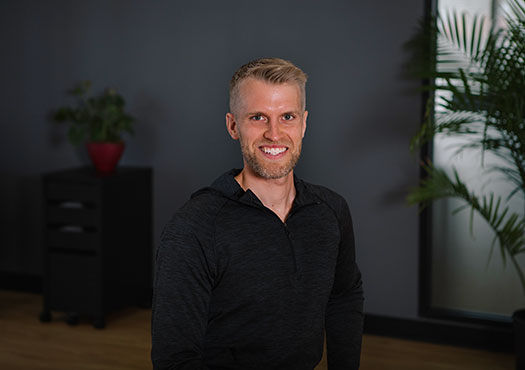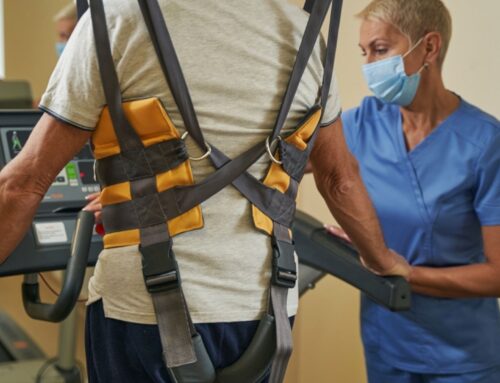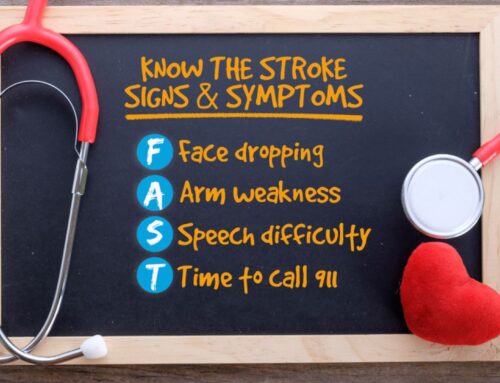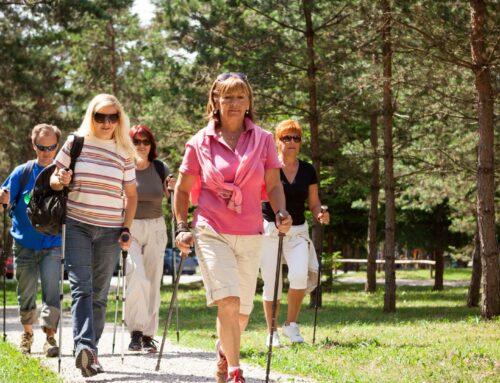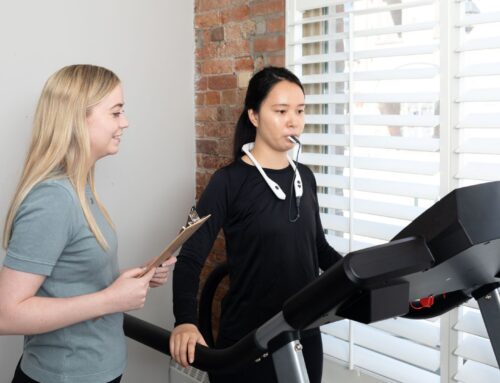The symptoms or subsequent complications of a stroke can persist beyond in-patient and out-patient hospital rehabilitation and impact a person’s quality of life. Optimal stroke recovery requires multidisciplinary neurological rehabilitation, not only in the early stages of returning home, but often many months after the stroke. Learn how private physiotherapists who provide stroke rehabilitation at home can help people who have had a stroke maximize their mobility and reach their full recovery potential.
What is a Stroke?
A stroke is a sudden loss of brain function caused by a brain blood vessel blockage (ischemic stroke) or rupture (hemorrhagic stroke). Symptoms of a stroke can include weakness or loss of sensation (often on one side of the body), confusion or difficulty speaking, vision difficulties, headache or loss of coordination and balance.
What Does Stroke Rehabilitation Typically Look Like?
The typical healthcare intervention after a stroke, includes an acute phase of care at a hospital, followed by an in-patient rehabilitation program at a specialized rehabilitation unit or hospital. There will also be a period of out-patient rehabilitation once the patient has returned home.
A stroke rehabilitation plan like this can take several weeks to several months to complete. However, stroke patients often have not returned to their previous level of ability and function by the end of this plan.
In order for a person who has suffered a stroke to reach their full recovery potential, additional therapy may be needed. In fact, the evidence suggests that “the greatest impact on patient health and well-being is from the long-term consequences faced when stroke survivors leave the hospital.”[i]
When a client has been discharged from their hospital-based rehabilitation program, but continues to have rehabilitation goals, where do they go? If these rehabilitation goals involve physical recovery, then finding a private physiotherapist who specializes in neurological rehabilitation is often the best option.
Stroke Therapy in the Clinical Setting
The private clinical setting can provide an accessible and innovative approach in delivering quality stroke care. In this setting, clients have access to numerous technologies such as Bioness®, Litegait®, KeeogoTM exoskeleton, as well as a host of other advanced devices and equipment to maximize motor recovery and functional independence. At Propel Physiotherapy clients can access the knowledge and treatments of physiotherapists, massage therapists, kinesiologists, exercise physiologists and yoga instructors all within one setting.
The Benefits of Stroke Rehabilitation at Home
People who have had a stroke can receive physical therapy in a clinic setting like Propel Physiotherapy’s Etobicoke and Pickering locations. However, there is another lesser known option which can often be more effective, and this is community-based physiotherapy or stroke rehabilitation at home.
With this option, a registered physiotherapist with experience treating clients with stroke and other neurological conditions will come to the location that suits you best, whether that is at your home, in a public park, a community gym or your workplace.
According to the article Evidence-based Community Stroke Rehabilitation, the “delivery of therapy in the patient’s home is increasingly common, particularly as health services face the challenge of reducing costs and moving care out of hospitals. There is also evidence that rehabilitation in the home environment is more beneficial for patients.”
Here are some of the benefits of stroke rehabilitation at home:
- In-home assessment – Completing the assessment in the client’s home environment allows the therapist to see how the client is moving and completing tasks in their everyday life –not just in the clinic setting.
- Goal-setting – Setting physiotherapy goals with a client after completing an in-home assessment allows the client and therapist to set realistic and concrete goals.
- Home exercise program – Tailoring the exercises to a client’s home environment makes the exercises more reproducible when the client is doing the exercises on their own.
- Problem-solving – Being in the home setting allows therapists to problem-solve with clients regarding their issues around mobility, compensatory strategies, environmental barriers, etc.
- Task-specific training – Completing exercises and trialing different tasks that are specific to the client’s home like climbing stairs, standing up from a low chair, etc.
- Environment – Leveraging environmental factors in a client’s home to improve their rehab or change compensation patterns
- Eliminating Travel – Eliminating the client’s travel time to and from the clinic saves the client’s energy for the physiotherapy session.
A common difficulty after stroke is getting up and down stairs. It’s one thing to work on and accomplish this task in a clinic setting, but to the client it can feel like a completely new issue once facing the staircase in their own home. If the client has been struggling with this activity since their injury, what better way to assess and treat this issue than tackling the exact staircase which they will be using every day?
Another issue that can cause secondary injury, fear, and/or further disability is falling. If a client is fearful of falling or has had a fall in their home, there are usually multiple factors which are at play. By seeing the client walk and move around in their home environment, these factors are more easily addressed.
Perhaps the client should be avoiding an area with poor lighting or thick carpeting, or maybe the balance exercises that were given in the clinic aren’t translating to the way the client needs to move in and out of their bathroom. By assessing a client in the area in which they have had a fall, the treatment can be more specifically tailored to improve or eliminate this problem.
Completing the physiotherapy assessment and treatment in the client’s home or community setting allows for the client and physiotherapist to address tasks and exercises which are most important to the client’s recovery and their day to day function. Research evidence has shown that stroke rehabilitation at home and in the community can lead to improved recovery, with regaining of independence and improved abilities to perform activities of daily living.[ii]
Propel Physiotherapy is an industry leader in neurological disorder and brain injury treatment. Contact us to learn more about our stroke recovery programs.
Written by


